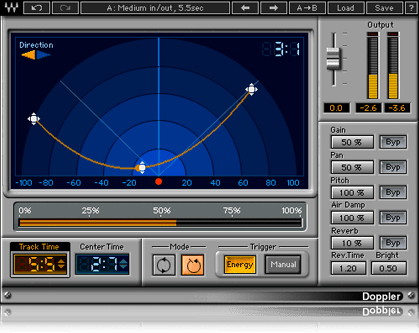Written By Katie Maynard, MPSE
Sound Effects Editor, Boom Box Post
Not too long ago, I was given the creative opportunity to build a unique version of a van out of non-traditional motor sounds. The job was to make something that resembled a motor out of sounds that were not machinery or would sound like a realistic engine. This was a fun challenge and proof of concept that you can make a motor out of anything!
What was your brainstorming process?
Given the fact the objective was to make the van sound silly, and cartoony, I knew I wanted to use some classic cartoon sounds as well as non-tonal instruments. I was going to need to look for sounds that were short and didn’t have too much of a tail, so the rhythm would sound succinct. From there I just started pulling a bunch of sounds into my session that fit that description, and combining them until I found something I liked.
Could you give a step-by-step of the process?
Step 1: Determine what your vehicle needs to sound like.
Is it a bubble propelled underwater vehicle, or a sedan powered by a hamster wheel? In this case, I was looking to design a large vehicle with a rhythmic quality out of traditional cartoon sounds. It was not meant to sound sleek and hi-tech, nor rusty and old. This led me to look at things like shakers, air chuffs, bulb horns, and cartoon pops.
Here are a few sounds that I used:
And here are a few that were great, but I decided did not fit this particular build:
Step 2: Assess how realistic it needs to sound.
In this case, it still needed to sound like a large diesel vehicle, so I knew I was going to utilize some elements from a school bus, RV, and heavy truck. These would be layered along with the cartoony motor I was building to make it feel like a cohesive vehicle.
Step 3: Assemble your pieces and make a rhythm out of the elements.
I chose to have three layers to my camper van: the shorter, quicker sounds being my shakers, bubbles, and engine sputters, the longer, toonier elements like the bulb horns, a whiz, and the air release, and finally the realistic bus layer. Once I got these into a rhythm I liked, I printed these into workable long files that would create my engine. Through plugins that used graphic pitching and speed changes, I could manipulate these layers to sound like they are accelerating, decelerating, passing by and other important elements, which leads me to step 4.
Step 4: What do I need?
With all vehicles, you want to build or find a good start and stop, acceleration, deceleration, bys, an idle, and maybe a faster and slower version of the vehicle depending on the scene. These will be the layers you use to give your vehicle motion and match onscreen action. Other important things to think about would be the doors, steering wheel, horn, seat movement, seatbelts, etc. Especially if this will be a vehicle which we return to in the series, the more you build from the beginning the easier your job will be in the future. Feel free to experiment with some fun versions of these elements. Some examples might be a rubber duck for your car horn, or cork pops and jug thunks on your doors opening and closing.
Step 5: Sweeteners!
Things like the air release of brakes, tire skids, metal suspension, and other things very specific to vehicles are going to make your bus sound very believable. This can really take your editorial from sounding passable, to really great work that matches the visuals. In this example, all of my sweeteners were traditional vehicle sounds, but that doesn’t mean you can’t create your own versions using non-traditional elements like our motor.
What advice would you give to new editors on how to go about this specific design work?
I would encourage new editors to get creative with an assignment like this. This is something that doesn’t actually exist, so there are creative freedoms with how imaginative you’re able to get. Take inspiration from realistic vehicles in terms of pitch and speed and apply that to your non-traditional elements. I would also suggest working with some kind of grid lines to ensure all of your layers are following a precise rhythm. This will especially help when you start creating pass bys and other more complicated elements.
Any plugins you would recommend?
Doppler and Graphic SoundShifter by Waves were the two plugins I felt I needed to achieve this build. Really any plugin that allows you to manipulate pitch and time will do the trick!
Waves Doppler Plug-In
Waves Graphic SoundShifter Plug-In
How did you make this design unique?
I think the prompt alone made this build unique. The elements you choose to put together are going to make a combination of things that will sound brand new. Using familiar sounds like maracas, bubbles, and horns together in a pattern in combination with sweeteners made a totally new and unique engine design for this silly van.
If you enjoyed this blog, check out these:
HOW TO DESIGN A MAGICAL TRANSFORMATION
MAKING A MAGICAL ARTIFACT - CENTAURWORLD EDITION
DESIGNING A TELEMETRIC TONE ROW



